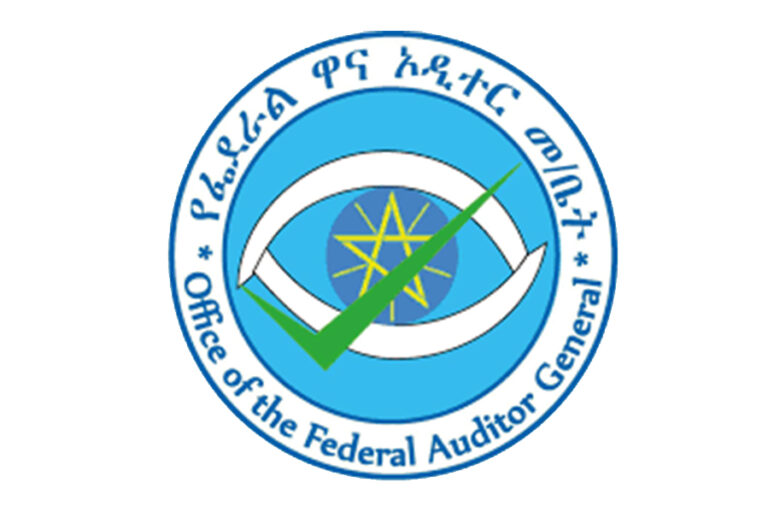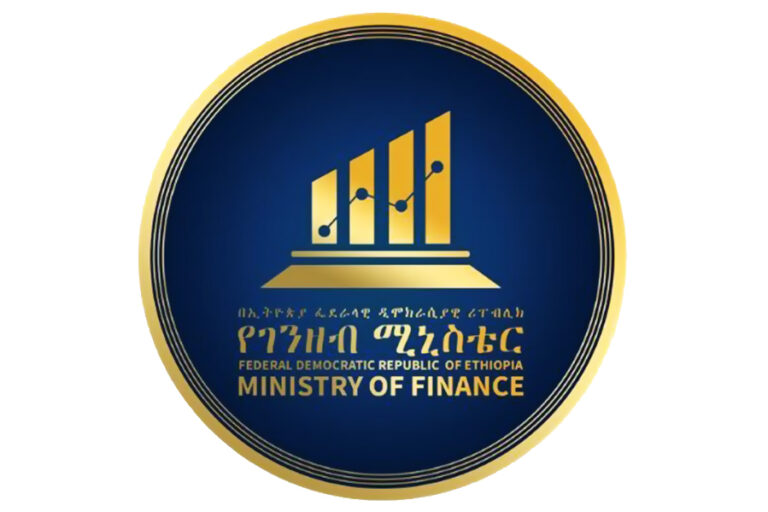Aimed to decrease frauds and malfunctions in the market Addis Ababa Trade Bureau orders traders to change their weighing scale to digital from the mechanical or analog one.
“Based on the standard, the Bureau has stated that shops should start to change their scale to the digital one,” said official from the trade bureau, adding that, “Beside the price-hike, frauds and malfunctions in the market is stressing the consumer. Thus, the trade bureau has been working to change the scaling system in the market to protect the consumer. Moreover, the system can minimize frauds and underweight selling in the market.”
As stated by the bureau this task mainly focuses on six main sectors in the market, including Butchers, supermarkets and vegetable and fruit shops, consumer unions and other grocery items.
As the bureau explained, with in the last few months more than 4500 shops have changed their analog scale to digital, and the bureau will continue working to change scales all over the city.
Digital scale is the most accurate and precise instrument that uses force sensor to measure the load of and object which is an important part of many processing facilities because it performs the much needed quality control. Digital scales works with the use of a strain gauge load cell whereas analog scale uses spring to indicate the weight of an object digital scales convert the force of a weight to an electric signal.Thus, mechanical scales are much more prone to user error. It is often difficult to read the weight from a sliding arm and thus it is easy to make a mistake when viewing a dial scale. Mechanical platform scales have no onboard intelligence and have relatively crude load measurement schemes.
Digital weighing machine is highly reliable, and it will not give inaccurate reading. It is automatically calibrated every time when you turn on.
In addition it is easy to use with automatic turn on option, and it will turn off automatically after the use.
The major advantage of the digital scale is that it provides high accuracy and has a good durability. Failure is not a common feature and it’s often accompanied by a warranty from the company.
The shift to digital scale
Finance Ministry fails to deliver
Office of the Federal Auditor General (OFAG) says that the Ministry of Finance (MoF) has failed to deliver a given policy framework for public debt despite being expected to have the same. Meanwhile, the direct advance of central government has expanded by over four fold in a decade’s time.
Moreover, OFAG says that there are gaps on the use of retention accounts.
During the parliament session that was held on June 29 on its performance audit finding, OFAG revealed that despite MoF being requested to show public debt administration policy it failed to do so. The report added that the ministry should have prepared such policy to regulate the public debt.
“Under the World Bank ‘Debt Management Performance Assessment’, the debt management performance indicator that explained about the central government access to direct advance from central bank, National Bank of Ethiopia (NBE), shall have to give rules and regulation. Meanwhile, MoF should be bound by law in terms of amount and time frame of accessing direct advance. In spite this MoF does not have able to show when it was requested,” OFAG’s performance audit reported.
The World Bank ‘Debt Management Performance Assessment’, in particular, debt management performance indicator-7, indicated that whenever possible, the central government should avoid direct borrowing from the Central Bank and otherwise be legally restricted in both amount and tenors.
“Monetary financing of government deficits imposes undesirable constraints on monetary policy operations and, in addition, is detrimental to domestic debt market development,” the World Bank document said.
“Since MoF does not have rules and regulation regarding direct advance amount limitation and time frame, the amount of money that it accessed under direct advance has accrued,” OFAG explains, adding that, “in 2009/10 budget year the amount of direct advance that the central government accessed from central bank was 45.87 billion birr which expanded by 4.19 fold to reach 192.26 billion birr by 2019/20 budget year.”
OFAG also added that regarding human resource administration the ministry does not has ‘conflict of interest guidelines’ and ‘code of conduct guidelines’, “but it must have,” OFAG underlined.
The Ministry had issued the ‘public debt management and guarantee issuance directive no. 46/2017’ for public offices and enterprises which allowed the government to exercise much stricter control on non-concessional borrowings on the stated state organs.
OFAG said that although MoF had imposed the directive as of 2017, it has not seen any justification the shows that the directive is applied.
It added that the directive enforces public enterprises to come up with detailed feasibility study and financial capability to access external debt under government guarantee in its performance audit, however, OFAG could not get such required document for the external loan the public enterprises accessed starting from 2014/15 to 2018/19.
The Deputy Auditor General Meseret Damte, reminds that public enterprises must have settled their external loan as per the agreement timeframe. “Meanwhile selected samples indicate that enterprises have accrued unpaid debt ,”she stated showing that Ethio Telecom have almost USD 214 million principal and USD 36.3 million interest arrears while Sugar Corporation has USD 25.89 million and Ethiopian Electric Power has USD 96.89 million that have not been paid starting from 2016.
On the other hand OFAG’s audit report added that in the 2019/20 budget year close to 4.6 billion birr was supposed to be collected by MoF from 23 public enterprises privatization process payment and related lease charge, and additional installments for credit sales.
It added that seven public enterprises did not pay the cumulative 14 billion birr of debt that they secured from MoF starting from 2008/09 budget to last year. It explained that the money had come from foreign sources via MoF.
In relation to the central bank, OFAG disclosed that there are gaps with the administration of retention account.
The NBE ‘retention and utilization of export earnings and inward remittance’ directive stated that relevant retention account holders shall use the foreign currency for import of related services or goods to the business and that is to be evaluate and approve by relevant bodies or banks.
OFAG’s finding indicated that banks have given the permit for the import of goods or services, which are not related with the business or against the NBE directive.
“As per the audit, 15 banks have abused the directive,” it explained.
It has also said that there was a gap on taking measures on companies which are not renewing their retention accounts. It said that there are hotels, travel agents and other companies which are receiving payments on foreign currency with out renewal of retention account.
OFAG recommended that NBE should work to correct the faults in retention account management.
Deciphering Ethiopia’s growth and transformation
The development partners’ disbursement during the 2019/20 fiscal year increased by 20 percent compared to the preceding year, a new report of Ministry of Finance (MoF) reveals. Because of the debt burden, the infrastructure sector disbursement has declined in the second Growth and Transformation Plan (GTP II).
During the stated period development partners disbursed a total amount of USD 4.7 billion for 317 projects/programs implemented with the government, which resulted in the achievement of international commitments, 2030 agenda of Sustainable Development in general, and home grown economic reform agenda.
Meanwhile, there was the amount mentioned on the above during the period in total USD 5.5 billion was disbursed by development partners to several ongoing projects/programs.
However, as per Ethiopia’s SDG Need Assessment (2019), between 2020-2025 official development assistance (ODA) amounts of USD 8 billion per year (on average) is required to meet the Sustainable Development Goal (SDG) financing need, according to MoF report.
The disbursement during the reporting period increased by 20 percent when compared to 2018/19 fiscal year (USD 3.9 billion) and by 75 percent when compared to 2010/11 fiscal year (USD 2 billion).
The 9th annual development cooperation report of MoF indicated that generally, during the GTP II period disbursement increased on average to USD 3.6 billion from of USD 2.8 billion an average disbursement during the GTP I period.
It added that during the GTP II period, the economic sector disbursements has doubled, which is mainly due to support to the economy through policy reform program from International Development Association (IDA), France, Germany, and USD 3.38 billion disbursement for 110 agriculture sector’s new programs/ projects.
“Additionally, disbursement to one of the core drivers of the economy, the industry sector, also increased by three-fold. During this period, disbursement to the service sector (water, health, and education) overall increased by 7 percent when compared to GTP I,” it explained.
On the other hand, the disbursements made to the infrastructure sector (energy and transport) decreased, which is mainly due to a decline in China’s disbursement to the energy sector programs especially between 2016/17 and 2018/19 fiscal year.
This decrease in disbursement was due to Ethiopia’s debt burden to China. But while that remains true, all multilateral maintained their disbursement for the sector during this period.
In terms of fragmentation of development cooperation, Herfindahl Index indicated that aid to Ethiopia is fragmented that Ahmed Shide, Minister of Finance, underscored on his message at the report that development partners to support to ease the fragmentation on the aim to attain reduce unnecessary costs and to focus on achievement of execution on higher level.
The report said that aid fragmentation has been slightly improving from 0.13 in 2010/11 fiscal year until it reaches 0.23 in 2017/18 despite a decline to 0.15 in 2019/20, which is the last year of GTP II.
Similarly, the composite index indicates that, agriculture sector is the most fragmented sector. “It shows agriculture sector is the sector with the highest number of intervention and development partners since it maintained 103 programs and 24 development partners, during the reporting period,” it explains “Therefore, a great effort is required to ensure lower program transaction costs if development cooperation funds are to be effectively utilized and deliver results.”
During the 2019/20 fiscal year, twenty-five development partners signed a new program and project financing agreement with the government to implement 115 programs/projects with a total amount of USD 3.6 billion.
Among those 77 projects with USD 3.2 billion were new while 37 projects/programs with USD 506 million were additional financing for ongoing programs and projects. Out of the total commitment, 53 percent was a grant, 43 percent loan and the rest 4 percent was technical assistance.
Multilateral and Bilateral institutions provided 56 percent and 44 percent of the total commitments respectively.
During the period, USD 5.5 billion was disbursed by development partners to several ongoing projects/ programs.
Out of that total amount, USD 4.7 billion was for 317 projects/ programs implemented by the government along with 36 bilateral and multilateral development partners. While the rest of USD 0.8 billion was disbursed through NGOs and state actors of humanitarian activities like National Disaster Risk Management Commission.
Disbursements, which channeled through the government, were 4.4 percent of the GDP. The report explained that the increase in disbursement during the fiscal year was mainly due to the disbursements made to the development policy reform financing from the World Bank (WB), France and, Germany, as well as due to the disbursements for COVID-19 policy responses made from International Monetary Fund and WB.
Out of the total development assistance channeled through the government (USD 4.7 billion), USD 2.6 billion or 52 percent was channeled through the government treasury. Out of the total development assistance channeled through treasury (USD 2.6 billion), USD 1.4 billion was direct budgetary support for the second Development Policy Financing and COVID-19 policy response from multilateral and bilateral partners mentioned above. The remaining USD 1.2 million was for 13 channel one programs.
Multilateral and Bilateral development partners disbursed a total of USD 3.5 billion (74 percent) and USD 1.3 billion (26 percent) for the implementation of 167 and 216 programs/projects respectively.
It said that bilateral development partners’ disbursement has increased by 20% when compared to that of the previous year. This is mainly due to an increase in disbursement for Chinese programs/projects, which were held back due to Ethiopia’s debt burden. And also due to new disbursements from France and Germany for policy reform financing.
International Financial Institutions (IFIs) disbursement similarly shows an increase of 22 percent when compared to 2018/19 fiscal year, while UN agencies and EU contributes 4.4 percent and 2.4 percent respectively.
The urgency for crude palm oil
Ministry of Trade and Industry has asked the National Bank of Ethiopia to provide foreign currency to crude palm oil importers as priority. There are two industries importing crude palm oil in the country and according to Melaku Alebel, Minister of Trade and Industry, there is a plan to increase the number to five.
“Currently, 232 oil industries in the country are using 37 percent of input material crude palm oil, however there is huge shortage of input of materials which exacerbates the shortage of oil in the market,” said Melaku, adding, “As a short term plan to stabilize the market, the ministry has planned to increase importing palm crude edible oil.”
As Melaku said, government subsidizes crude palm oil imports as palm oil to make it more affordable to the majority of the population.
“We focused on the crude because it is less costly from the processed one,” said the minister adding that, “Producing crude edible oil here is our big vision which will create more jobs for many people in addition to stabilizing the market for edible oil which is currently dependent on imports.”
According to the ministry of trade there are 232 oil industries in the country, 26 big industries and 206 medium and small industries. Together the industries have capacity to produce 1.25 billion liters of oil annually where the national consumption is 906 million metric ton annually, however as a result of shortage of input most of the industries are working under their capacity can’t meet the demand. Meanwhile only 40 percent of the total demand is currently covered by local edible product.
The minister speaking this week at a forum that focused on the country’s edible oil related issues explained that the total number of active edible factories in Ethiopia has doubled in the past few years.
“Since some are under construction, when all of these edible oil factories become operational in a few years, the country is likely to substitute cooking oil imports more and more with local production and in the long-term, it should drive increased production of oilseeds locally,” insisted the minister.
Also local production of oilseeds cannot meet raw materials demand for the local food processing industry, and this is stated as one of the challenges in the local production of edible oils. The Ministry of Trade and Industry and the Ministry of Agriculture have also promised to give land within one month to oil producers to cultivate oilseeds in collaboration with regional governments. The ministries plan to do so before the rainy season ends.
“The government is assisting farmers in planting large pulse and oilseed plants on suitable land to reduce edible oil imports,” said Umer Husen, Minister of Agriculture, adding that, “The country has huge capacity on producing oilseeds, there are huge industries but still there is huge oil shortage problem in the country, thus it requires an integrated work of all stakeholders.”
Oilseed production covers only 2.7 percent of the total production which is 6.61 percent of cultivated land from the total cultivated lands. Similarly, both new and old factories are facing challenges with input material. Local production of edible oils in fiscal year 2020/21 (July to June) is forecasted at 63,000 MT. Niger seed, cottonseed, soybeans, and sunflower seeds are used mainly to locally produce cooking oils.
Total edible oil consumption in fiscal year 2020/21 (July to June) is projected at 630,000 MT, of which 90 percent is imported. Most of the oil consumed is palm oil. To this end, the country is encouraging investment in the edible oil manufacturing sector to expand productions and substitute imports with local production.






